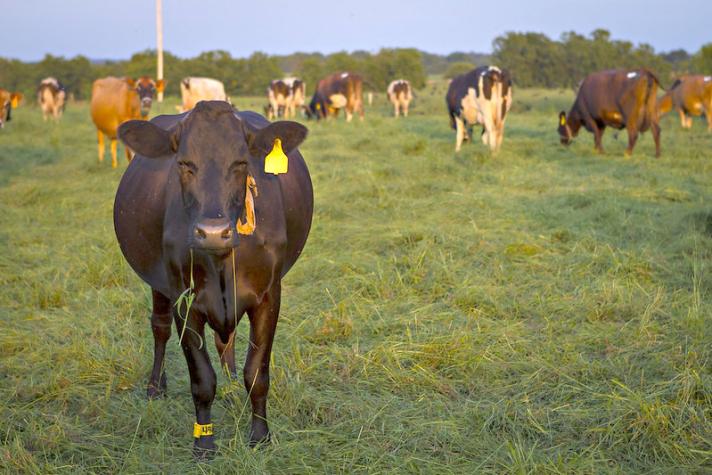SALEM, Mo. – With cattle prices at record high levels and many forecasts projecting relatively high prices for the next couple of years, some producers feel they can do no wrong. In times like these, even less-productive cows and mismanaged calves are likely to make a profit.
High prices are a welcome change for cattle producers, but it’s important to remember that higher prices mean mistakes cost more than when prices are low, says University of Missouri Extension livestock specialist Eric Meusch.
Profit margins briefly increase during the high part of the cattle cycle, but this is also when a lot of money can be left on the table through poor management, Meusch said.
“Rather than becoming complacent and sloppy, it pays to refine your management to capitalize on higher prices and ensure that more money ends up in your pocket,” he said. “This means following the same approach you must follow during low cattle prices. Pay attention to the basics.”
The Golden Rule. A beef cow should have a calf every year, on time, without exceptions. It is the producer’s job to set the cows up to succeed by providing proper nutrition and health programs. If a cow can’t do this job, she needs to go. Cows that need extra feed or care to keep up with the herd may pay for themselves when calf prices are high, but they won’t in the long run. Luckily, cow prices have been high, so it’s great to get rid of less productive cows and focus on the cows that produce, Meusch said.
Wean and work calves! Buyers always want calves that are castrated, vaccinated and weaned. These animals can make the transition to the backgrounder or feedlot the easiest. When calves aren’t prepared to be stressed and commingled, they are more likely to become sick and are less profitable. Buyers are less willing to pay good prices for calves. They need to be more confident that they have been handled well. “Interestingly, when calf prices are high, a larger percentage are sold uncastrated, not vaccinated or fully weaned,” Meusch said. These calves might still be “profitable,” but a lot of money is left on the table when a producer thinks, “Why bother when calves are so high anyway?”
Watch your inputs. When cattle prices are high, the costs of production inputs increase as well. Feed, fertilizer, equipment, etc., all increase in price and aren’t likely to go down when cattle prices do. “When profit margins are high, we can afford to spend more on feed and fertilizer, but it’s important to remember that these inputs may not pay for themselves in times with lower cattle prices,” Meusch said. Hay is a good example. Hay has been expensive, but the high calf prices have been paying for it. When calf prices come down, hay prices may remain high, so producers need to remember to work on their pasture and grazing management to reduce their hay needs.
Invest in the future. When cattle prices are high, there seems to be a lot more new trucks, tractors and equipment around. “There is nothing wrong with these things, but it’s also important to remember to make investments that can increase productivity in the future,” Meusch said. That could include infrastructure, fertility and genetics. Facility improvements are always beneficial, but those that reduce labor are likely to be especially valuable in the future. Things like better fencing and cattle handling facilities, storage, etc., can make life easier no matter what cattle prices are doing. Soil fertility is always a good investment, and improving pastures can provide benefits for years to come. Good-quality genetics are also an investment in the future. Investing in a little better bull when calf prices are high is likely to continue to pay when prices drop and margins are tight.
“Everyone involved in the cattle business hopes that prices remain high and good times continue, but we know from experience that this won’t always be the case,” Meusch said. “It’s important to make the most of the present profit opportunities and plan for a leaner time in the future. Being a good manager is just as important when prices are high as when they are not. Hopefully, this has you thinking about where you stand and how to capitalize on this part of the cattle cycle.”
Contact Meusch with any questions or to request additional information at 573-729-3196 or meusche@missouri.edu.
Photo
https://extension.missouri.edu/sites/default/files/legacy_media/wysiwyg/News/photos/20240419-cattle-1.jpg
File photo, MU College of Agriculture, Food and Natural Resources.
